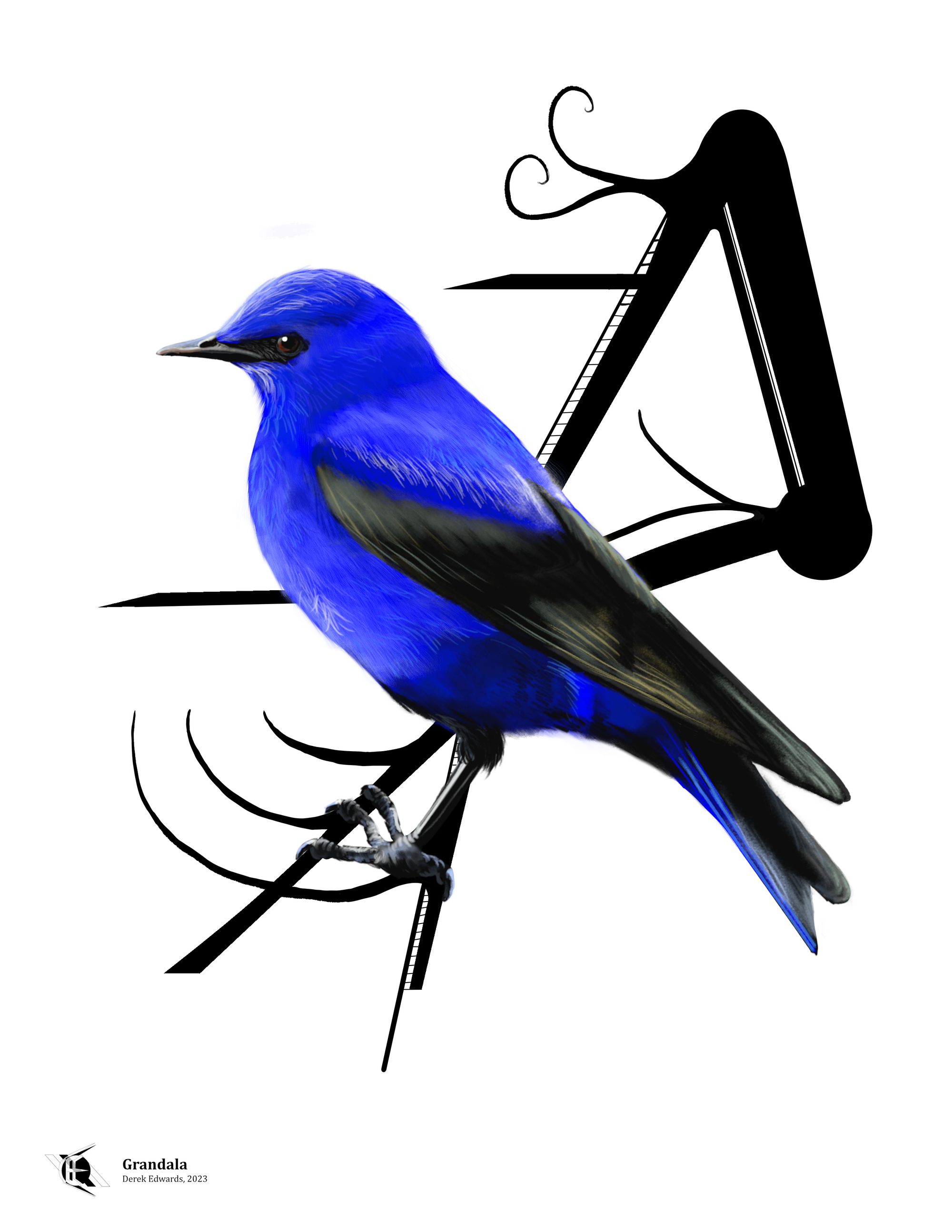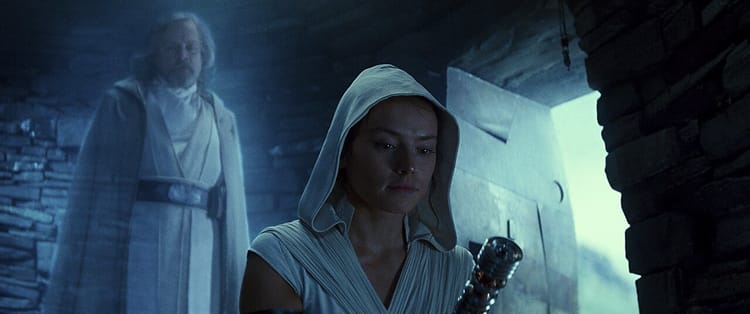
Running Commentary 9/25/2023
Hello,
It's Fall again. Apparently calling Autumn "Fall" is a distinctly American thing. It comes from the old British slang term "fall of leaf", which is pretty straightforward. That term fell out of use in Britain but persisted in the U.S. Kinda like the word "soccer".
Anyway...
Watching...

Ahsoka
The sixth episode brings in (almost) all the familiar faces from Rebels. There's still no Zeb. Here are my notes:
- Thrawn is finally here. After getting name-dropped all the way back in The Mandalorian Season 2 and having been teased again in Season 3. we finally have Thrawn on-screen for the first time since Rebels ended. He didn't do a whole lot besides arrive, but what we saw of him really felt true to the Thrawn Trilogy. In Rebels he felt like a generally authentic take on the character, but the situation he was in felt very different. There, the Empire was at the height of its power, and Thrawn was just a part of it, and not really even a main part. Here, he's the Empire's last hope, answerable to no one, and posting a serious threat to the New Republic just by returning to the galactic scene. Lars Mikkelsen does as well portraying him on-set as he did voicing him in animation.
- Two character bits from Thrawn stood out to me here: First, in his statement that he wouldn't understand why Sabine allowed Morgan and company to reach him; that showed both how much of a strategic thinker he is and how little connection he has to the people in his own life. Second, he doesn't for an instant believe that Ahsoka is out of the picture. That was always his strength in Rebels - he was never overconfident, so he wasn't often surprised when the heroes weren't quickly defeated first-try, and he wasn't an idiot.
- Add Wes Chatham to The List. He's not the biggest star, but people know him from The Expanse. Hopefully, he isn't behind a mask and a voice modulator for the whole show.
- Ezra showed up in this episode, too. Let's not forget about him. He did even less than Thrawn, so I'll probably have more to say about him next week. Thrawn mentioned that his troops' numbers were thin, and it seems Ezra has enough stormtrooper dog tags to make a mailshirt, so maybe he's why. But there also seems to be something else on this world.
- Maybe it's because I just got done reading two books about eels (review forthcoming), but I wonder if this other galaxy isn't just where purgills go to die, but also where they go to spawn. That could give our heroes a way back home.
- I'm curious what Thrawn is loading on his ship. They almost look like coffins.
- I wonder why the Eye of Sion has a brig.

Bird of the Week
There are many blue birds: bluebirds, of course; blue jays (and most other jays); blue-winged Spatula ducks; blue herons, great and little. But one of these birds must be the bluest. Many might say that the bluest bird is the indigo bunting, and that is indeed the bluest bird I've ever seen. But, if I'm to believe photos I've seen, one yet bluer lives in the Himalayas: the Grandala.
The grandala is not a very well-known bird. I'm sorry to say I've found almost no information about it beyond physical descriptions, vague statements regarding its diet, and photographs. It doesn't even have a common name in English; Grandala is the name of its genus, of which it is the only member. It is considered a thrush, though it seems possible that it will be re-classified in the wake of genetic testing.1 Brian Houghton Hodgson, when he first described the bird, called it "a singular bird, having the general structure of a Thrush, but with the wings vastly augmented in size and the bill of a Sylvian [an Old-World warbler]"2 so even he lacked full confidence in calling it a thrush. He was the one to name it "grandala", from the Greek for "large-winged", when he called it Grandala cóelicolar; the specific name is the same today, though not spelled with the accent over the o, and it means "sky-colored".3 (I've covered Hodgson before when discussing a different bird which he was first to describe.)
As I mentioned, the grandala is a bird of the Himalayas. They form flocks up above the treeline, the males' bold blue color standing out against the austere landscape; females are mottled gray and thus less visible at a distance. They don't live quite up on the snowy peaks that give the mountains their name; himalayah is a Sanskrit term meaning "home of snow", with the core word meaning "home" going back to the proto-Indo-European root for sticky (in that a home is where someone or something "sticks") that is also the root of the English words "slime" and "limestone". 4
A note about my drawing, since I have some space to fill: I did a sort of experiment with the perch. I based it on some real sticks I found a photo of, but the look of them is meant to evoke Dravidian script, an alphabet from South Asia which is my favorite writing, looks-wise, as well as being inspired a bit by the art of Eric Hagan.
- Coltar, N. J. “Asian Enigmas - Four Odd "Thrushes" ”(2004) BirdingASIA. https://www.orientalbirdclub.org/enigmathrushes/.
- Hodgson, B. H. “Journal of The Asiatic Society of Bengal, Vol-12, Part-1, (January-June 1843) New Series. https://archive.org/details/dli.calcutta.00009/page/448/mode/2up.
- Jobling, J. A. (editor). The Key to Scientific Names in Birds of the World (S. M. Billerman et al. editors), Cornell Laboratory of Ornithology
- “Himalaya | Etymology, Origin and Meaning of Himalaya by Etymonline.” Online Etymology Dictionary. https://www.etymonline.com/word/Himalaya.
Curation Links
Why the empty atom picture misunderstands quantum theory | Mario Barbatti, Aeon
“The empty atom picture is likely the most repeated mistake in popular science. It is unclear who created this myth, but it is sure that Carl Sagan, in his classic TV series Cosmos (1980), was crucial in popularising it…While preparing this essay, I ran a poll on Twitter asking whether people agreed with Sagan’s quote above. Of the 180 voters, 43 percent answered that they mostly agreed, and 27 percent fully agreed. Google ‘atoms empty space’, and you will find tens of essays, blog posts, and YouTube videos concluding that atoms are 99.9 percent empty space. To be fair, you will also find a reasonable share of articles debunking the idea.”
The Sad One | Ernie Smith, Tedium
A look at the squonk, one of many lesser-known creatures of American myth. The squonk supposedly lived in Pennsylvania; it was an exceedingly ugly creature that would dissolve into tears if captured, or if it saw its reflection.
Gazehounds, Greyhounds, and Bloodhounds | Brad Bolman, Cabinet Magazine
As greyhound racing falls out of favor with a society increasingly concerned with animal welfare, the surplus of racing dogs are finding themselves living in “canine blood-banks”. Unlike human blood-banks, canine blood-banks are full of living donors kept on standby for the benefit of pet dogs in need of transfusion. It’s not a bad life, but it is an odd one that raises odd questions.
The Tale of Clancy the Scrivener | Ramsey Shehadeh, Tor
[FICTION] “After a fraught, improbably long life, a post-apocalyptic archivist resigned to cataloging ephemera from the “old world” times finds his life upended by an orphaned girl. . .”
See the full archive of curations on Notion






Member Commentary